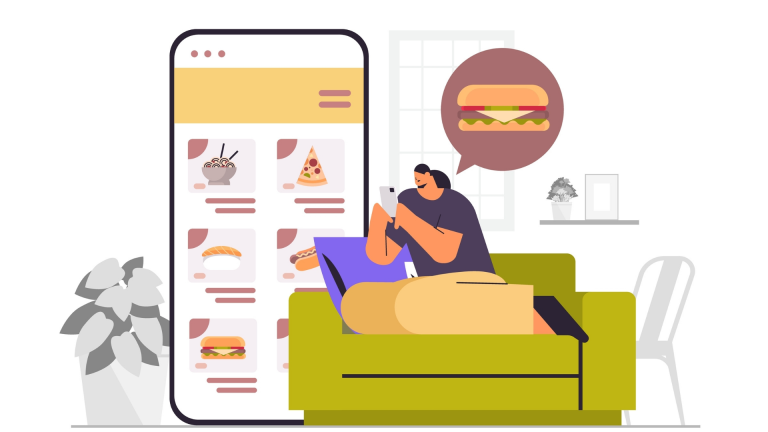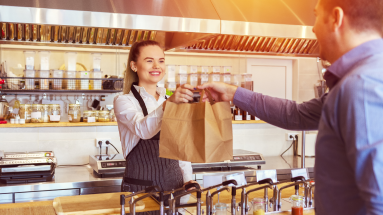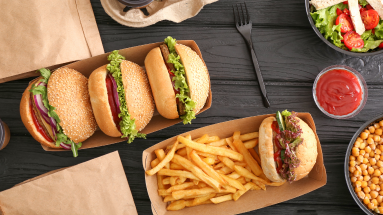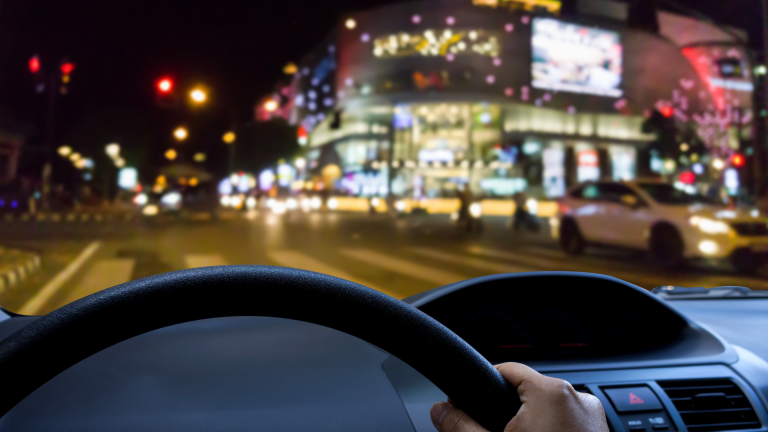Even among other businesses, restaurants are known for having tight margins. That’s why restauranteurs need to reduce costs and maximize efficiency if they want to achieve the optimum restaurant profits.
Luckily, current technological advances allow restaurants to employ various means to minimize labor costs and maximize output. Among these, automation is the best choice in multiple areas.
This article will explore the 15 main ways that an automated system can benefit your restaurant operations.
Why Are Restaurants Adopting Automation
Automation is a relatively recent trend in restaurants, fuelled by a largely stealthy technological revolution that has been sweeping across the globe.
But why all the fuss about automation in the first place?
This section will discuss the general ideas behind the widespread adoption of automated technology in the restaurant industry.
- Less workload. It’s no surprise that machines and software are far more efficient than humans when doing repetitive tasks. Allowing machines to take over menial yet mission-critical tasks empowers employees to tackle more impactful work.
- Increased productivity. When employees can tackle more meaningful work like ensuring product and service quality and assisting customers instead of getting bogged down taking orders, the funnel grows wide and moves faster.
- Better customer experience. Customers also seek to maximize their time. A more efficient and faster-moving queue can improve customer experience and even draw more potential customers.
- Higher revenues. Increased employee productivity and enhanced guest experience encourage more business, stimulate growth, and improve your bottom line.
- Improved legal compliance. Some automation tools can enhance security and improve compliance with health and other legal codes.
15 Ways to Use Automation in Your Restaurant
We’ve established that automation can help improve your restaurant operations. But which specific use cases do they fit best?
Here are 13 ways that automation can improve certain aspects of your restaurant operations.
One of the most common forms of automation employed across restaurants is digital menu boards.
As you can probably glean from its name, digital menu boards are menus that can be accessed through a digital device. There’s a wide variety of digital menu boards currently around. Examples include websites, social media, mobile food apps, and in-store LED displays.
Additionally, digital menu boards are dynamic. You can change the display depending on what you want to achieve and customize the display to reflect a holiday vibe, stand behind a cause, or draw attention to daily specials. Those things are impossible to do with physical menus.
Moreover, it’s also much easier to maintain your branding with these than with traditional menus. Whatever form your digital menu boards come in, they all have the same benefits.
Whether your menu items are displayed on multiple screens in your store, on mobile devices, in marketing campaigns, or on social media, you can create the same appeal that your customers love about your restaurant through your menu.
This enhances your brand awareness and drives your marketing strategy.
In other words, by incorporating automation into your menu displays, you can gain an instant advantage.
2. Self-Ordering Kiosks
Self-ordering kiosks are becoming widely available around the country, especially for big chain stores. It’s understandable why they would want to use this kind of technology, especially since the digital race makes self-ordering kiosks more accessible to the market.
Here are several definite advantages to utilizing automated self-ordering kiosks in your restaurant.
- Decreases staff load. In restaurants, taking orders is one of the most time-consuming tasks your staff handle. Minimizing this workload allows them to focus on more high-value aspects of the business, such as service quality, which can increase customer retention.
- Simplifies upselling. Self-service machines never forget to upsell drinks, desserts, and customizable ingredients. As a result, self-ordering kiosks increase a restaurant’s average check size.
- Gathers data. One of the best features of self-ordering kiosks is that they allow you to collect real-time consumer data that you can use to spot trends and behaviors. You can use these in your marketing efforts like social media marketing campaigns, email marketing, and general restaurant marketing drives.
- Decreases contact. Customers prefer self-ordering kiosks mainly because it minimizes their potential contact with another person, thus lessening the threat of catching a disease.
3. Inventory Software
A restaurant’s inventory is one of the most critical aspects of its operation. After all, it’s where most of the other functions rely: you can’t cook food without inventory, you can’t budget without inventory, and so on.
And yet, most restaurants still use spreadsheets to manage their inventory.
While this may have worked before, technology has come so far that using spreadsheets to manage your inventory today is nothing short of purposefully putting yourself behind competitors.
These days, it’s best to use restaurant inventory software. These programs automate the meticulous inventory management process, tracking stocks, sales, orders, and deliveries.
Unlike manual tracking, automated inventory management significantly minimizes the margin of error and gives you far more accurate figures, reducing potential losses and helping you estimate better food costs.
4. Automated Table Reservations
If you’re doing your job right, your restaurant’s floor area can get busy fast. When things get very hectic, it’s easy for mistakes to happen when reserving tables, especially if you’re using a manual system.
Automating table reservations using table reservation software allows you to maximize your front of the house to be as efficient and error-free as possible. These are usually included in CRM subscriptions.
Most table management software have the following features to make that happen:
- Models your restaurant front-of-house to create a more accurate digital floor plan.
- Maximizes table covers and value with ongoing table monitoring.
- Simplifies table management through staffing, transfer options, reservation features, and more.
No dissatisfaction will ever drag down your Yelp review with automated table reservations because you missed their table reservation.
Call buttons on every table minimize the social friction of calling for a waiter.
A huge part of customer experience in restaurants is knowing that a team is always ready to assist you with your every need, within reason. Thus, call buttons to streamline this process by providing a sure-fire means for your customers to request assistance without waiting till a waiter notices them.
Call buttons also make it easier for waiters to serve what would otherwise have been blind spots in your restaurant’s layout. Such features are extremely useful for unconventional or themed restaurants with plenty of covers or interior design.
6. Accounting Software
Accounting is a critical aspect of your restaurant. Your restaurant can be down as early as a few weeks with problematic or careless accounting. Moreover, accounting is also crucial for your obligation to document your restaurant business numbers for various legal purposes.
The following solution, for the restaurant owners to keep records themselves, can be difficult and even legally problematic if you don’t do it right.
Fortunately, accounting software is now readily accessible for many business owners. DIY accounting software integrates into your system and tracks your numbers, such as your expenditures and profits.
This makes communicating with an on-retainer accountant easier and is more legally compliant.
7. Automated Cooking Process
The best chefs don’t just cook great-tasting food – they also create something that their customers love.
That said, at its core, cooking is a highly standardized, repetitive task that seeks to approach a consistent result.
While the technology is still not advanced enough to become mainstream, there’s already a variety of brands that customize robotics in the kitchen.
Automated robots are highly customizable, standardized, hygienic, and always efficient in their processes. Thus, it makes sense for some brands to employ automated cooking processes in their kitchens.
8. Voice Ordering By Phone
Voice-based artificial intelligence (AI) is revolutionizing the way people interact with technology. By allowing users to control devices and applications with their voice, Voice AI is making it easier than ever to access information and complete tasks. This is especially beneficial for businesses that rely on phone calls to take orders, such as restaurants.
With Voice AI, customers can simply tell the restaurant what they want to order without having to remember a long list of menu items. This not only saves time but also reduces the likelihood of errors. In addition, Voice AI can help businesses to upsell by providing recommendations based on the customer’s order.
SoundHound is one of the leading providers of Voice AI technology. With its easy-to-use platform and extensive features, it’s an excellent solution for businesses that want to improve their voice ordering system.
9. Digital Loyalty Programs
If you want to boost your brand’s appeal, one of the best things you can do is give loyal customers lots of free stuff.
Digital loyalty programs automate this process. While paper coupons, cards, and discount passes have always been the norm, it’s not the most efficient: they get crumpled, lost, or forgotten.
A digital loyalty program solves these problems by providing repeat customers with the following features.
- Round-the-clock tracking lets your customers receive customer loyalty points even when they forget to claim them.
- Automated rewards whenever new customers sign up.
- Personalized offers that target your customer’s preferences through their profiles.
10. Scheduling Software
Staff scheduling is critical in your day-to-day operations. Without efficient scheduling, it’s easy to fall into chaos, creating an inefficient system that wastes company hours, lowers morale, and minimizes productivity.
Using scheduling software solves most of these problems by automating set processes and making management more accessible.
This software allows you to DIY your staff’s schedules by having all your shift data at the right place and time.
Everything from employee hours, overtime, vacation requests, shift covers, etc., can all be managed in one place. Best of all, everything happens without the headache that came with an old manual, pen-and-paper, or spreadsheet system.
11. Automated Deliveries
Automated delivery drones are now being employed across big-name industries like logistics and delivery services.
Since food ordering and delivery essentially follow the same pattern, automated deliveries are set to revolutionize the food delivery industry. Plus, with Covid-19 uncertainty still around, people are more likely to keep online ordering and delivery services around for years to come.
Automating deliveries can make your services more accessible to your customers, mainly if you function primarily as a QSR (quick-service restaurant) with a prominent delivery element.
12. Mobile POS
A mobile POS system allows customers to complete their sales without approaching a particular zone of the restaurant.
Some restaurants utilize specialized tablets with point-of-sale software per table to give customers the ability to select and pay for their food without getting up from their table.
This ordering system can also contain other services and integrations like entertainment and games.
Mobile POS further streamlines the sale process to encourage additional spending and raise average check sizes.
Your security system is a core system necessary for your restaurant’s continued well-being. But even with a sound CCTV system, your restaurant is left vulnerable to security breaches and even employee fraud.
Video auditing subscriptions let you circumvent all of the inherent problems of old CCTV systems by using AI to recognize and catalog images from your cameras.
Essentially, video auditing tools give your CCTVs a brain. This allows you to implement capable features such as flagging theft as it happens, monitoring inventory, and more.
14. Self-Service Ordering at the Table
A self-service ordering kiosk at each table combines self-service kiosks and mobile POS elements. While customers can order from their table without standing up, they can’t use the system to initiate payments.
Nevertheless, it still streamlines the ordering process because waiters no longer have to wait on the customers to receive their orders. Instead, they will only have to deliver.
This translates into faster table turnover because of the reduction in waiting time and thus leads to more profits.
15. Voice Ai For Drive-In and Drive-Thru
Voice AI is revolutionizing the restaurant industry by allowing customers to order by voice through drive-in and drive-thru windows. With companies like SoundHound, customers can easily place their orders using natural language without having to remember specific menu items or prices. This not only saves time but also reduces confusion and helps to streamline the ordering process.
Voice AI can also help restaurants to upsell and cross-sell by suggesting additional items based on the customer’s order. For example, if a customer orders a burger, the Voice AI system could suggest adding fries or a soft drink to their order. By integrating Voice AI into their business, restaurants can provide a better customer experience and boost sales.
Measuring Success in Restaurant Sales
Utilizing automation technology allows you to do one vital thing: gather data. From your digital menu boards to table self-service screens, restaurants can collect consumer data that you can use to optimize the customer experience.
But once you have the data, what do you do with it? The answer is simple: you look at KPIs and measure your improvement in restaurant sales.
What is a KPI?
KPI stands for key performance indicators, and as you may have guessed, they are measurements that tell you certain things about your restaurant’s performance.
KPIs are critical because it functions as a bar from which you can measure your progress. Without KPIs, you will be lost in a sea of data.
KPIs for Restaurant KPIs to Track
Your specific restaurant strategy needs to be highly customized for your restaurant. To determine specific KPIs applicable only to your restaurant, you need to sit down and talk with your team and some analysts.
However, there are typical restaurant KPIs that everyone agrees provides you with varying levels of insight into your restaurant. These are the following.
- Overhead margin
- Gross profit margin
- Net profit margin
- Historical sales
- The average check per server
- Guests served per hour
- Time per table turn
- Customer satisfaction
Using automation tools, your restaurant can easily track these metrics without breaking your back with specialized tools.
Data like preferences of existing customers, profiles, and even phone numbers can then be used to enhance your digital marketing campaign, such as establishing your target audience, strengthening your SEO (search engine optimization), email marketing, and generally boosting your restaurant marketing.
Maximizing Restaurant Sales Using Automation
The restaurant industry is, by nature, highly competitive. And in this day and age, the battleground of the competition has expanded to include restaurant technology, probably because technology is now inherently linked to a good customer experience.
By making your processes more efficient, minimizing costs, and gathering high-quality consumer data, using automation technology will propel your restaurant service to the forefront of your niche.






